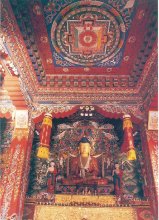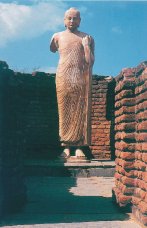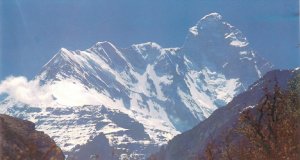|
|
 |
 |
  |
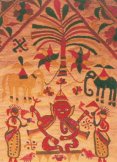 |
|
|
 |
| |
|
|
|
|
| |
|
THE IDEA OF INDIA |
|
| |
|
|
|
|
| |
|
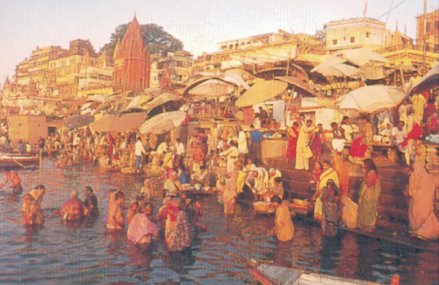 |
|
| |
|
|
| |
|
|
| |
|
|
| |
|
|
| |
|
|
|
| |
|
|
|
| |
|
|
|
| |
|
|
|
| |
|
|
|
| |
|
|
|
| |
|
|
|
| |
|
|
|
| |
|
|
|
| |
|
|
|
|
|
 |
|
|
India, many believe, is an idea. It is not one territory, not one people but a melting pot in |
|
| |
|
which many cultures have mingled to produce a unique sensibility, a grand civilization. |
|
| |
|
The
whole that is now India is greater than the many parts that have gone into its making. |
|
| |
|
Inevitably India means different things to different peoples. It denotes at the same time |
|
| |
|
spirituality and science, art and religion, antiquity and development, myth and history. |
|
| |
|
The
rich variety of its natural landscape, colors, textures, food and peoples has appealed |
|
| |
|
to the
romantic imagination of the civilized world since ancient times. |
|
| |
|
|
|
|
|
| |
|
|
Change and Continuity |
|
| |
|
|
|
|
|
| |
|
|
In the nineteenth century, India came to be imagined as part of a mysterious orient |
|
| |
|
|
imbued with an ancient wisdom timeless and changeless. Nothing could be further from |
|
| |
|
|
the truth. |
|
| |
|
|
|
|
|
| |
|
|
| India has always been steadily changing,
internally |
|
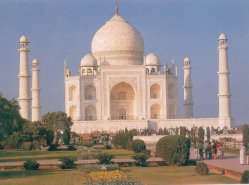 |
| and in step with the rest of the world. Between the |
|
| Vedic Age and the Classical Gupta Age, Indian state |
|
| and society underwent stages of transformation. |
|
| People came - especially from the North-West - in |
|
| a
steady stream bringing with them new crafts, skills, |
|
| languages and practices. The Turkish and other |
|
| Central Asian tribes brought with them Islam and |
|
| many innovations in social and political institutions. |
|
| The
flowering of Indian Muslim civilization under the |
|
| four great Mughals marked an epoch of continuous |
|
| development. |
|
|
|
 |
|
|
|
| |
|
|
| |
|
|
| |
|
|
| |
|
|
| |
|
|
| |
|
|
| |
|
|
| |
|
|
| |
|
|
| home |
|
|
|
| prologue |
|
|
|
|
|
|
welcome |
|
|
Nearer our own time, and better understood by us, the colonial and post-colonial states |
|
| contents |
|
|
have created new boundaries and institutions which have profoundly altered the lives of |
|
|
subject
moderators |
|
|
all segments of Indian peoples. |
|
| history |
|
|
|
|
|
| sexuality |
|
|
Much of India’s ‘ancient’ wisdom was not so ancient as might be believed. ‘Hinduism’ is |
|
| social
landscapes |
|
|
supposed to be ( one of ) the oldest religions of the world. But much of its known |
|
|
art |
|
|
features are less old than Christianity or Islam. The first surviving Hindu stone temple was |
|
| dance |
|
|
built only 500 years after the Athenian Acropolis. Popular deities like
Rama, Ganesha or |
|
| literature
|
|
|
Hanuman are much younger than Christ. |
|
| music |
|
|
|
|
|
| cinema |
|
|
|
|
|
| environment |
|
|
|
|
| economics |
|
|
|
|
| pot pourri |
|
|
|
|
| feedback |
|
|
|
|
| |
|
|
|
|
 |
|
|
|
|
| |
|
|
|
| |
|
|
|
| |
|
|
|
| |
|
|
|
| |
|
|
|
|
| |
|
Between the time of the early Greek philosophers and St. Thomas Aquinas, Buddhism arose |
|
| |
|
as a great religious movement, altered the course of India's history, declined and finally |
|
| |
|
sank back into the Hinduism from which it had emerged. In he meanwhile, however, |
|
| |
|
Buddhist ideas spread over virtually half the vast Asian continent. |
|
| |
|
|
|
|
|
| |
|
|
And yet India's antiquity compels our imagination. |
|
 |
|
|
|
|
|
| |
|
First, because it is old. The sacred bull and the holy pipal tree have been around for 4,500 |
|
| |
|
years. The hymns of Rig Veda are older than the oldest verses of the Old Testament. Second, |
|
| |
|
Indian culture has been always and fully conscious its own antiquity. It goes further, it |
|
| |
|
exaggerates its antiquity, upholds it as a virtue and claims its unchanging traditions as its |
|
| |
|
greatest achievement. Indeed, India's claim to singularity may well lie in having the longest |
|
| |
|
cultural continuity anywhere in the world. None of India's ancient civilizations were ever |
|
| |
|
completely destroyed or forgotten. |
|
| |
|
|
|
|
| |
|
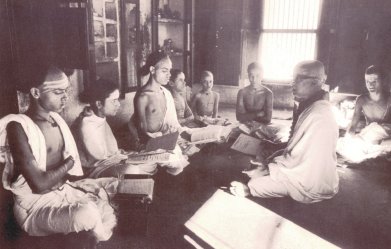 |
|
| |
|
|
| |
|
|
| |
|
|
| |
|
|
|
| |
|
|
|
| |
|
|
|
| |
|
|
|
| |
|
|
|
| |
|
|
|
| |
|
|
|
| |
|
|
|
| |
|
|
|
|
|
| |
|
|
The Glory of India |
|
| |
|
|
|
|
|
| |
|
|
The unembarrassed admiration of one of the greatest historians of Ancient India, |
|
| |
|
|
A. L. Basham, is directed towards India's tradition of humanity and it's people's passions. |
|
| |
|
|
|
|
|
| |
|
|
|
|
| |
|
|
|
| |
|
|
|
| |
|
|
|
| |
|
|
|
| |
|
|
|
| |
|
|
|
| |
|
|
|
| |
|
|
|
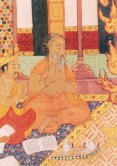 |
|
|
|
|
|
| |
|
The vast geographical and political spread of India has been, inevitably, torn by internecine |
|
| |
|
war, pulled asunder by the unscrupulous cunning of rulers and statesmen, ravaged by |
|
| |
|
famine, flood and plague. Judged, however, by the standard of other ancient cultures, India's |
|
| |
|
social and political ideals were lofty, fair and humane. War did not lead to mass civilian |
|
| |
|
slaughter, punishment rarely descended to sadism, slaves were few and heir rights were |
|
| |
|
protected. In the ancient world, India was an unusual example of a humanitarian order. |
|
| |
|
|
|
|
| |
|
Indian association with fatalism and asceticism is misleading. Even in the ancient days, |
|
| |
|
Indians lived within complex and evolving societies, achieving great heights in the sciences, |
|
| |
|
philosophy and art. Nature's plenty gave prosperity but did not induce lethargy. India was a |
|
| |
|
|
cheerful land with a robust enjoyment of simple pleasures. |
|
| |
|
|
|
|
|
| |
|
|
Class and Caste - A Difficult Legacy |
|
| |
|
|
|
|
|
| |
|
|
| Is India's ancient glory unalloyed by iniquity? To most social |
|
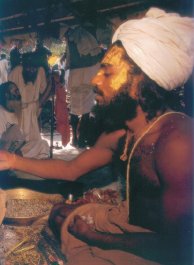 |
| scientists and many modern Indians, the most troubling legacy |
|
| of Ancient India is the caste-system. It has frozen Indian society |
|
| in an unchanging hierarchy, legitimating oppression and social |
|
| exclusion. It has helped to entrench the maxim that men's and |
|
| women's destinies are determined by their birth into a particular |
|
| social order. But what is caste? Why is it so powerful and enduring ? |
|
| |
|
| The term 'caste' is not Indian. The Portuguese who came to India |
|
| in the 16th century used the word castas (meaning tribes, clans or |
|
| families) to denote the many divisions with Hindu society. The |
|
| word stuck and caused (continues to cause) many a gray hair on |
|
| the scholar’s head. |
|
|
|
| |
|
|
|
| |
|
|
|
| |
|
|
|
| |
|
|
|
| |
|
|
|
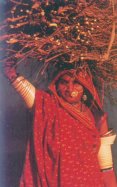 |
|
|
|
| |
|
|
| |
|
|
| |
|
|
| |
|
|
| |
|
|
| |
|
|
| |
|
|
|
|
| |
|
The term 'caste' comprises two quite different institutions of Hindu society - varna (class)
|
|
| |
|
and
jati (literally birth group, caste, for want of a better word). |
|
| |
|
|
|
|
| |
|
Varna |
|
| |
|
|
|
|
|
| |
|
|
Varna refers to the four-fold classification of society expounded during the Vedic period. |
|
| |
|
|
|
|
| |
|
|
How did the four classes come into being?
|
|
| |
|
|
|
|
|
| |
|
|
Here's what the myths say.
|
|
| |
|
|
|
|
|
| |
|
|
In the later Rig Vedic Period, we encounter the Hymn of the Primeval Man that seeks to
|
|
| |
|
|
explain the Foundation of the Universe.
Prajapati- the Primeval Man (Purusa) - committed
|
|
| |
|
|
his body to the first cosmic sacrifice. From his body the universe was produced.
|
|
| |
|
|
|
|
|
| |
|
|
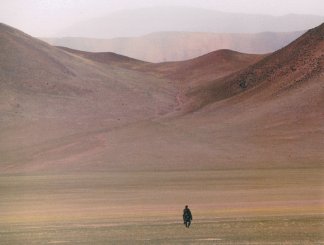 |
|
|
| |
|
| |
|
| |
The brahman was his mouth
|
| |
|
| |
Of his arms was made the warrior |
| |
|
| |
His thighs became the vaisya
|
| |
|
| |
Of his feet the
sudra was born.
|
| |
|
| |
|
|
|
| |
|
|
|
| |
|
|
|
| |
|
|
|
| |
|
|
|
| |
|
|
|
| |
|
|
|
| |
|
|
|
| |
|
|
|
| |
|
|
|
| |
|
|
|
| |
|
|
|
| |
|
|
|
|
|
| |
|
|
These were the four
varnas. Brahman ( priest ), Kshatriya ( warrior ), Vaisya ( traders ), and
|
|
| |
|
|
Sudras ( cultivators ). There are never more or less than four and their order of precedence
|
|
| |
|
|
has not changed in 2,000 years.
|
|
| |
|
|
|
|
|
| |
|
|
Varna literally means
colour. Brahmans wear white, kshatriyas yellow, vaisyas red and
|
|
| |
|
|
sudras black. The order of precedence is ritually legitimated by the degree of pollution
|
|
| |
|
|
attached to being born into one or another of them. The least polluted were the brahmans
|
|
| |
|
|
and the most polluted were the
sudras.
|
|
| |
|
|
|
|
|
| |
|
|
How would a historian explain the four fold varna system?
|
|
 |
|
|
|
|
|
| |
|
The very mention (mythic or otherwise) of the four varnas in the Rig Veda indicate their
|
|
| |
|
antiquity. The system must have already been there about 1000 B.C.
|
|
| |
|
|
|
|
| |
|
| The Aryans were a pastoral people. Cattle-keeping and
|
|
 |
| cattle-wealth marked the highest ranking and the ruling
|
|
| clans were called rajanya, who later adopted the title
|
|
| kshatriya (kshatra meaning power). But as the Aryans
|
|
| moved into the fertile and productive Ganga Valley, they
|
|
| and the non - Aryans already settled in these areas (vis)
|
|
| began to value land as the major source of wealth. The
|
|
| Aryan ruling class looked upon the brahman (priest) to
|
|
| confer legitimacy and convert them into KINGS (rajas)
|
|
| through powerful sacrifices. In return, the rajas paid
|
|
| fees
and gifts to the priests. Together, the priest and
|
|
| the king
( as in many other ancient polities
) constituted
|
|
| the elite of society. |
|
|
|
| Those called vis adopted the title vaisya and were the
|
|
| leading households of farmers, herdsmen or merchants.
|
|
| The heads of the household were called grihapati and
|
|
| they paid tribute to the kings and the priests.
|
|
|
|
| |
|
|
| |
|
|
| |
|
|
| |
|
|
| |
|
|
| |
|
|
| |
|
|
| |
|
|
| |
|
|
| |
|
|
|
| |
|
|
|
| |
|
|
|
| |
|
|
|
| |
|
|
|
| |
|
|
|
| |
|
|
|
| |
|
|
|
| |
|
|
|
|
|
| |
|
|
Subjects of the raja
(praja, to start with) and servants of the elite were divided into sudras
|
|
| |
|
|
and
dasas. These may have been non - Aryans or war captives. They were usually set to work
|
|
| |
|
|
the land and tend the cattle. Even lower in rank were the 'untouchables' so called because
|
|
| |
|
|
their occupations were supposed to be deeply polluting - leather workers, corpse handlers,
etc.
|
|
| |
|
|
|
|
|
| |
|
|
Jati
|
|
| |
|
|
|
|
|
| |
|
|
Jati is not fixed. There are thousands of jatis in different parts of the country. Jatis rise and
|
|
| |
|
|
fall in social scale, they die out and new ones emerge.
|
|
| |
|
|
|
|
|
| |
|
|
Ancient texts refer more to varna than to
jati. But when jati is mentioned, it does not imply
|
|
| |
|
|
the rigid and exclusive social groups of later times.
|
|
| |
|
|
|
|
|
| |
|
|
The first clear mention of jati is in Manu's
Lawbook, the Dharmashastra. He uses the term to
|
|
| |
|
|
describe proliferating lower occupational groups, which (according to Manu) consisted of
|
|
 |
|
|
descendants of illicit marriages of various kinds among the original
varnas.
|
|
| |
|
|
|
|
| |
|
Manu's explanation of the emergence of jatis through intermarriage and intermingling of the
|
|
| |
|
four varnas was accepted for a long time and by a surprising number of scholars. It is now
|
|
| |
|
recognized that such a trajectory of development is unlikely, if not impossible. Indeed,
|
|
| |
|
despite many overlaps, varna and jati have never quite harmonized.
|
|
| |
|
|
|
|
| |
|
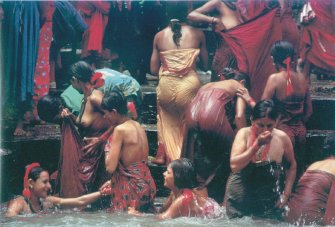 |
|
| |
|
|
| |
|
|
|
| |
|
|
|
| |
|
|
|
| |
|
|
|
| |
|
|
|
| |
|
|
|
| |
|
|
|
| |
|
|
|
| |
|
|
|
| |
|
|
|
|
|
| |
|
|
The development of jatis - as a system of groups within the varna system - normally
|
|
| |
|
|
endogamous, commensal and craft-exclusive must have taken thousands of years. Such a
|
|
 |
|
|
system of social ranking emerged from the association of many different racial and other
|
|
| |
|
groups in a single cultural system.
|
|
| |
|
|
|
|
| |
|
The caste group emerged as the center of focus for corporate feeling. Probably a result of
|
|
| |
|
intertwining tribal affiliation and professional association. The introduction of new racial
|
|
| |
|
groups and the development of new crafts continually elaborated both.
|
|
| |
|
|
|
|
| |
|
The corporate sense of caste emerged from the time when small clans living in isolated
|
|
| |
|
villages sought to hold themselves aloof by a complex system of taboos. As these small and
|
|
| |
|
primitive people were forced to come to terms with an increasingly complex social and
|
|
| |
|
economic system, they sought to group themselves around existing corporate identities.
|
|
| |
|
|
|
|
|
| |
|
|
The system began to elaborate and grow rigid in the Middle Ages.
|
|
| |
|
|
|
|
|
| |
|
|
The Europeans encountering a system they imperfectly understood, exoticised or demonised
|
|
| |
|
|
'caste' where fancy (or self-interest) led. Among the many drastic interventions of the British
|
|
| |
|
|
Indian State, a damaging one was to attempt a taxonomy of castes based on the mistaken
|
|
| |
|
|
assumption that
jatis, like varnas, are immutable. They assumed - completely mistakenly -
|
|
| |
|
|
that caste pertained to the ritual rather than the social and historical. This was a costly
|
|
| |
|
|
mistake.
|
|
| |
|
|
|
|
|
| |
|
|
The term 'caste' lost most of its historic political, social, economic and cultural attributes in
|
|
| |
|
|
the course of the twentieth century. And yet, it continued to attach corporate loyalty. On the
|
|
| |
|
|
one hand, 'caste' became a platform for preserving old and voicing new entitlements; on the
|
|
| |
|
|
other, its emptiness opened it up to manipulation by conflicting groups and classes.
|
|
| |
|
|
|
|
|
| |
|
|
We shall see how many other social relations that developed in ancient India cast their long
|
|
| |
|
|
shadow - sometimes drastically altered, sometimes only marginally modified - across
|
|
| |
|
|
several millennia of political and social development. In the next few meetings we shall
|
|
| |
|
|
discuss themes and episodes from between the events associated with the great epic,
|
|
| |
|
|
Mahabharata (900 BC) to the close of the Classical Gupta Age (500 AD).
|
|
| |
|
|
|
|
| |
|
|
Love, Samita |
|
| |
|
|
|
 |
|
| |
|
|
|
|
| |
|
|
|
|
| |
|
|
|
|
| |
|
|
|
|
| |
|
|
|
|
| |
|
|
|
|
| |
|
|
|
|
| |
|
|
|
|
| |
|
|
|
|
| |
|
|
|
|
| |
|
|
|
|
| |
|
|
|
|
| |
|
|
|
|
| |
|
|
|
|
|
| |
|
|
|
TOP
|
|
![]()
![]()
![]()

![]()




